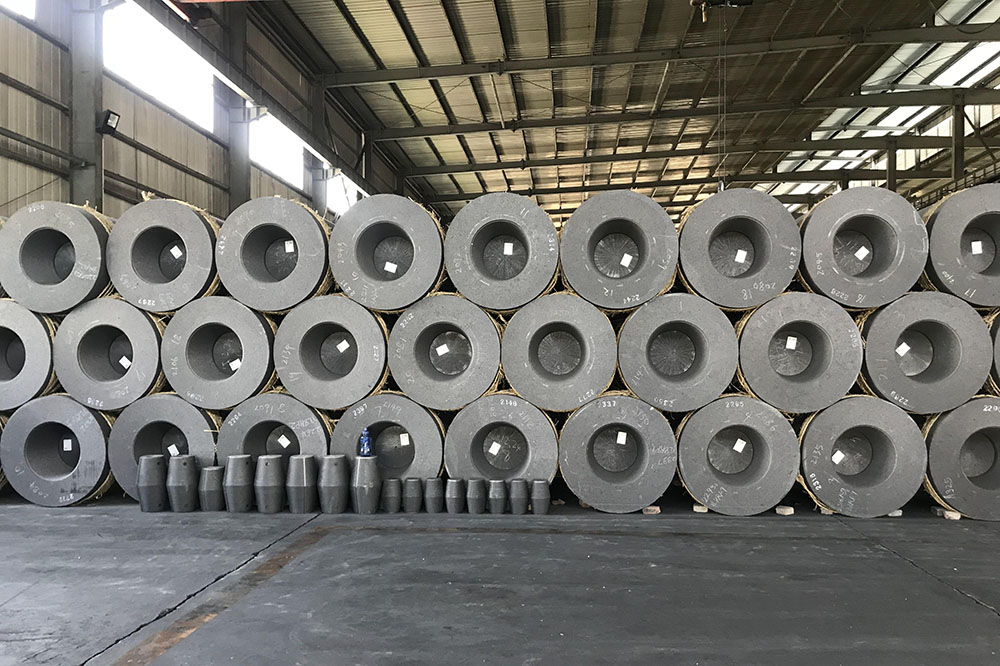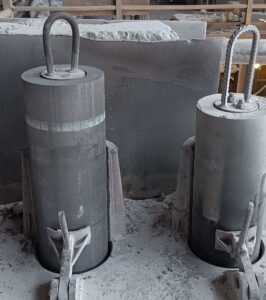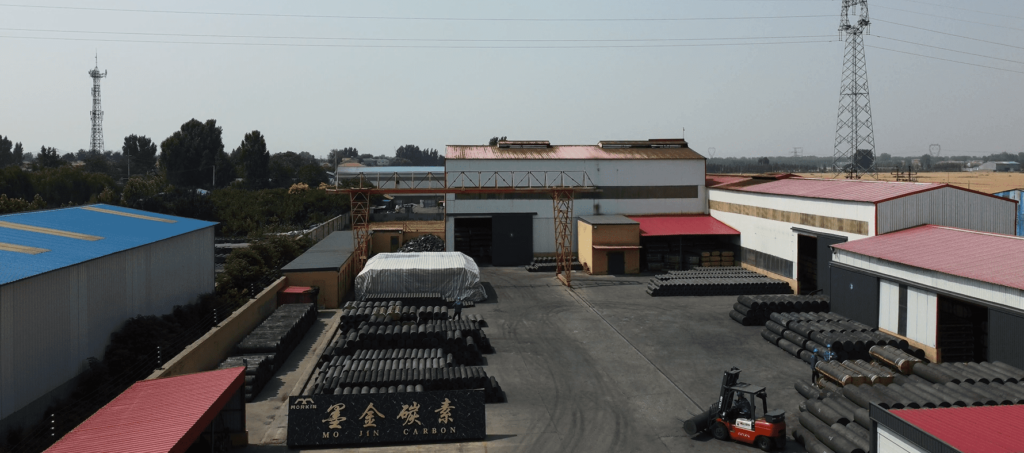
One of the applications with the largest amount of carbon material is used as the conductive electrode of the electric furnace. Due to the different design parameters of the ore-thermal electric furnace, the electrode quality parameters are different. Generally, graphite electrodes are used in steel making electric arc furnaces,
carbon electrodes are used in smelting high-purity silicon, while calcium carbide and ferroalloy ore-thermal electric furnaces are mostly self-baking electrodes, and self-baking electrodes are made of electrode paste. Electrodes produced by roasting in the production process of a mineral-thermal furnace.
Graphite electrode is mainly made of petroleum coke, needle coke as raw materials, coal asphalt as a bond, by batching, kneading, pressing, roasting, graphitization, machining and made. It is a conductor that releases electric energy in the form of arc in electric arc furnace to heat and melt the charge. According to its quality index, it can be divided into ordinary power, high power and ultra-high power graphite electrode. High power and ultra-high power graphite electrodes are generally impregnated and roasted several times to reduce porosity and reduce specific resistance. Due to the limitations of the forming machine, the diameter of the graphite electrode is generally not more than 1000mm, and it is generally 500mm in China, which is generally used in blast furnace steel making.

Carbon electrode is based on electric forging anthracite, petroleum coke, graphite, coal bitumen and other as the main raw materials, by batching, forming, roasting, mechanical processing of carbon conductive materials, it is the 21st century, to gradually promote the use of a new type of energy-saving
environmental protection materials, as a mineral thermal conductive electrode has been widely used in industrial silicon metal silicon smelting process. In a submerged arc furnace with the same capacity, compared with the graphite electrode, the diameter of the carbon electrode can be made larger (the largest carbon electrode can be produced in China at present, and the graphite electrode is generally less than 1000mm in China), so that the arc in the furnace is widened, the arc is stable, and the hot melt efficiency is ensured, the product output is increased, and the product power consumption is reduced.

The self-baking electrode is made of anthracite, anode, crushed graphite, petroleum coke and asphalt as the main raw materials. The electrode paste is prepared by batching, mixing and molding. The electrode paste is loaded into the electrode cylinder which has been installed on the ore thermal furnace.
The self-baking electrode can be used continuously, and it can be lengthened and sintered while being used. The process of making the self-baking electrode is relatively simple and the production cycle is short, but it has high requirements for raw materials, ingredient formula and technical index control. The self-baking electrode can be 2000mm in diameter according to the electrode tube, which greatly widens the arc band, stabilizes the arc line, ensures the hot melt efficiency, expands the molten pool volume, and increases the product output. As an important raw material of self-baking electrode, electrode paste has been widely used in the production and use of various ore-heating electric furnaces such as calcium carbide, ferroalloy and yellow phosphorus.






